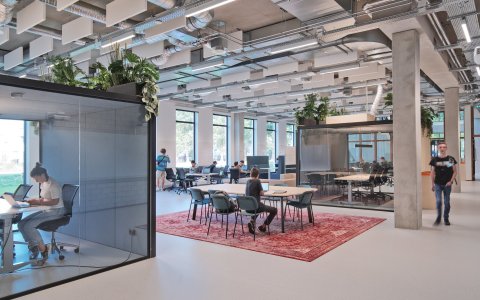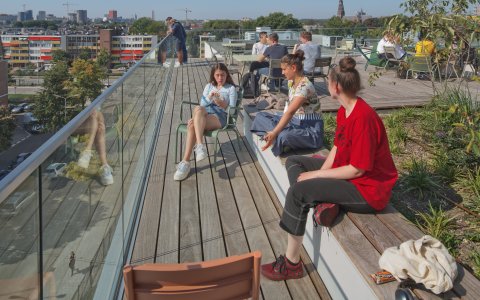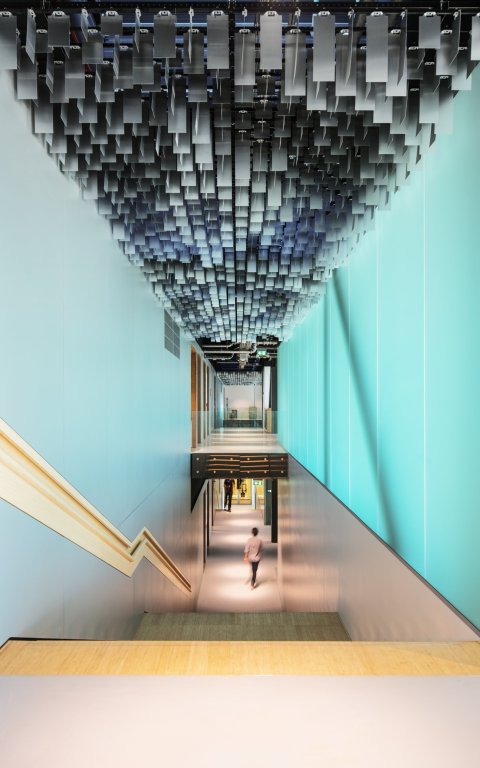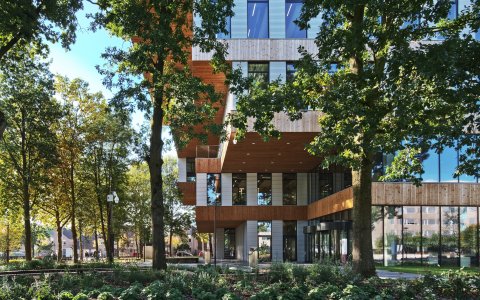
Fontys R10, Eindhoven
Fontys University of Applied Sciences is revamping its campus in Eindhoven city centre. Previously a fenced-off enclave of anonymous buildings, the campus is set to become an integrated knowledge environment that welcomes and inspires students, teaching staff and commercial enterprises alike and supports their joint ventures. To get the redevelopment off to a flying start, EHA, in co-design with Fontys, conceived the new R10 building to serve as a model of contemporary campus architecture defined by integration, adaptability and sustainability.
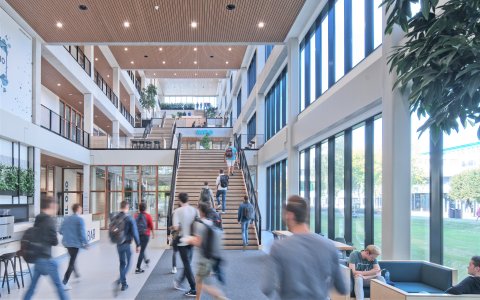
Project details
Location Campus Rachelsmolen, Eindhoven
Client Fontys University
Program Faculty of Information & Communication Technology
Status Completed
Awards & Nominations Winner School Building of the Year Architectenweb Awards 2021
Architect Ector Hoogstad Architects
Construction cost consultant Kamphuis Schaufeli
HVAC & building physics consultancy Deerns Raadgevende ingenieurs
Main contractor Huybregts Relou
MEP Engineer Deerns raadgevende ingenieurs
Structural Engineer IMd raadgevende ingenieurs
Photography Petra Appelhof
Video 3MP online video
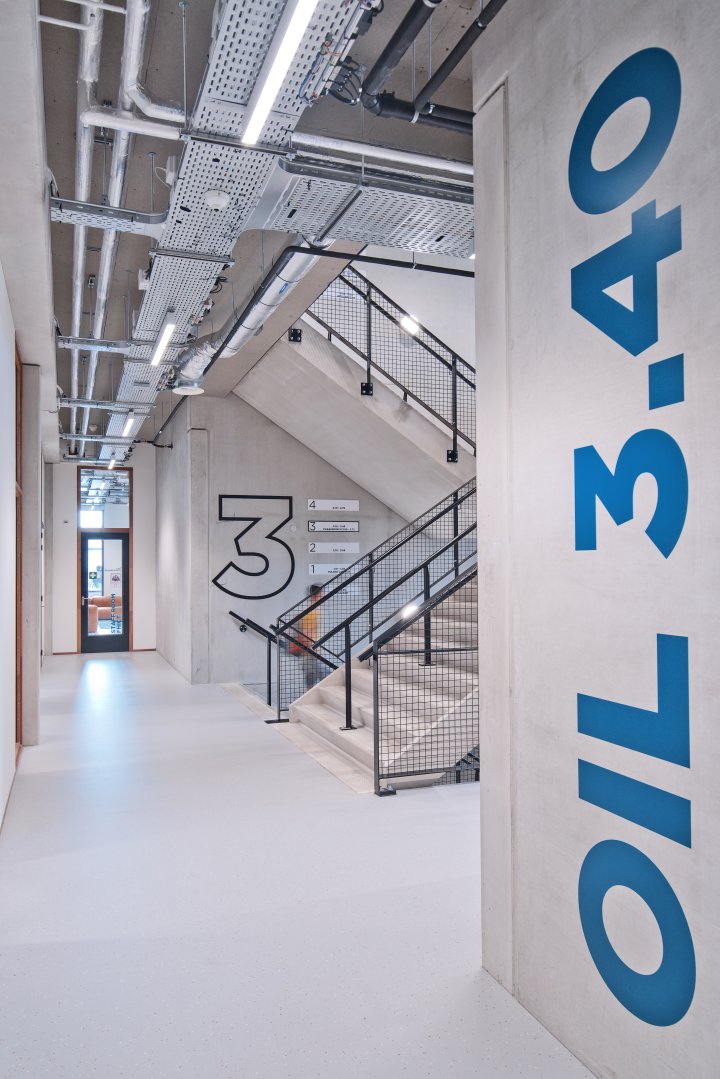
Evolving education
The delivery of education is evolving at a rate that makes it impossible to determine exactly how university buildings will be used in the future. Consequently, we had to make R10 as adaptable as possible. To this end, we sought inspiration in contemporary examples of successful conversions and repurposings of industrial buildings, such as the Van Nelle factory. A common factor of such achievements is they derive a great deal of their appeal from their spacious and industrial character.
The core of our design comprises a generously dimensioned structure consisting of three parallel bays measuring 11m in depth and boasting a floor-to-floor height of 4.5m. Internal spaces are open plan and lend themselves to endless reconfiguration according to the ever-changing modes of education delivery. Smaller spaces for group work can be arranged to alternate with larger areas for studying, and you can also just as easily transform one into the other. In fact, we’ve already sketched out a whole range of configurations in collaboration with the Fontys ICT, Fontys Pulsed and Fontys Paramedic School, the current residents.
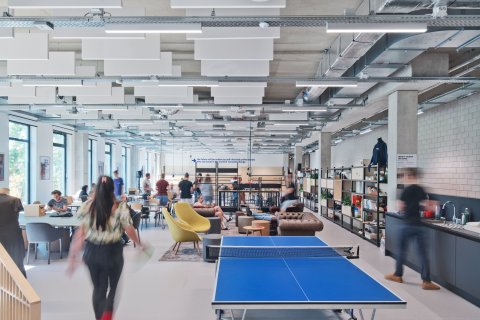
Diagonal boulevard
The entrance, which faces east, is sheltered beneath the cantilevering floors above, and opens directly into the heart of the building. The cantilevers on this side of the building are inverted on the opposite side, forming a series of stepped outdoor terraces on which to enjoy the evening sun and get some fresh air without having to leave the building.
Once inside R10, you find yourself in a double-heighted “diagonal boulevard” consisting of a series of interconnected terraces. Here you’ll find facilities such as the student information desk, presentation and meeting rooms. The open-plan nature of the interior spaces and the wide employment of clear-glass partition walls — wherever walls exist — means maximum transparency. This allows students and lecturers on any floor to see what’s happening outside of their own classroom. The extra-wide staircases encourage exercise and meeting fellow students or teachers. Fully glazed facades enable a strong visual connection with the heart of the campus, the lawn outside.
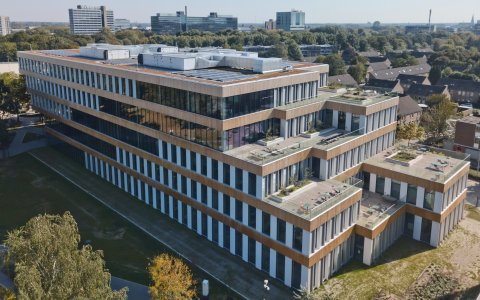
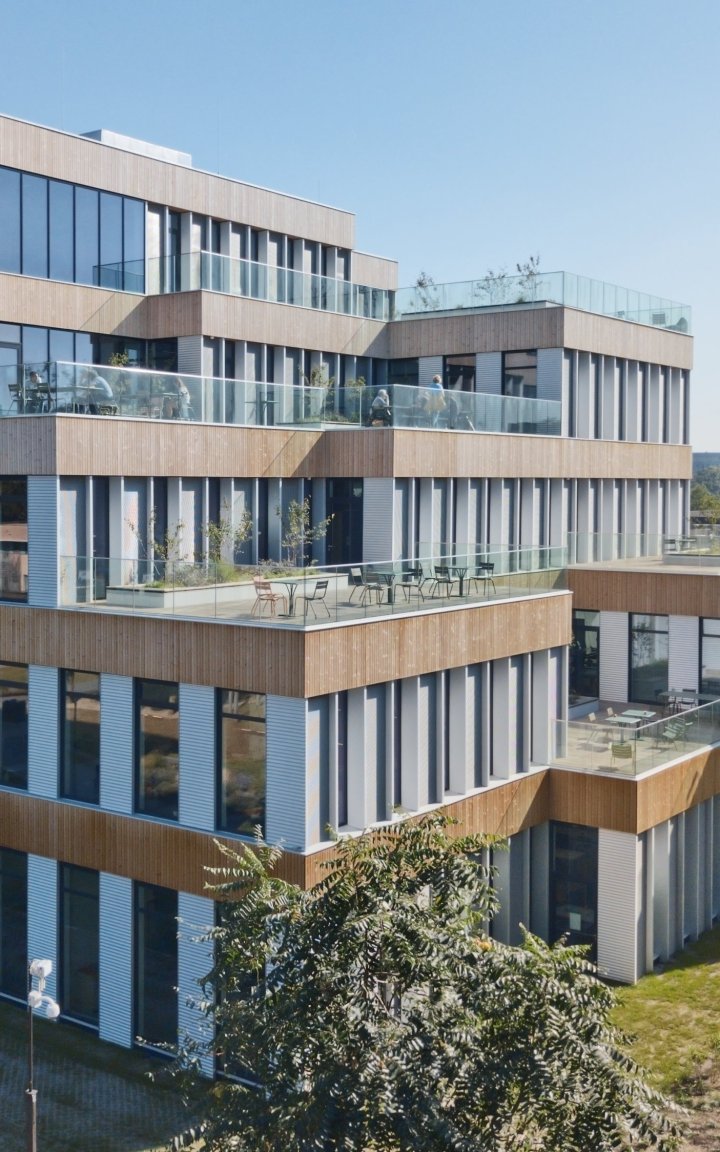
Bareness and neutrality as a design concept
EHA was also responsible for the interior design, including all furnishings, greenery and signage. The approach here was based on the concept of bareness and neutrality, with ceilings, pillars and floors left seemingly “unfinished”, the purpose being to encourage students and lecturers to “finish” the job by using their imagination to personalise their environment in whatever way they found inspiring.
Circular design and sustainability were, as usual, guiding principles in both the interior and exterior design. Thus, much of the furniture is recycled and new additions are made of reclaimed and natural materials.
By the same token, facades are made from structural insulated panels of sustainably sourced wood, finished with thermally preserved pinewood. Thanks partly to the performance of these façades and the roof insulation, energy demands are 40% below legal BENG-requirements. Additional measures such as the employment of aquifer thermal energy storage for heating and cooling, heat pumps (the building has no need for gas) and solar panels help ensure that as much of what energy the building requires is met by renewable sources.
The “smart blue-green roof” is computer-controlled for drainage and water retention. This climate-adaptive buffering of rainwater supports efficient water management and provides additional cooling. As a nice bonus, it also helps optimize the efficiency of the solar panels.
